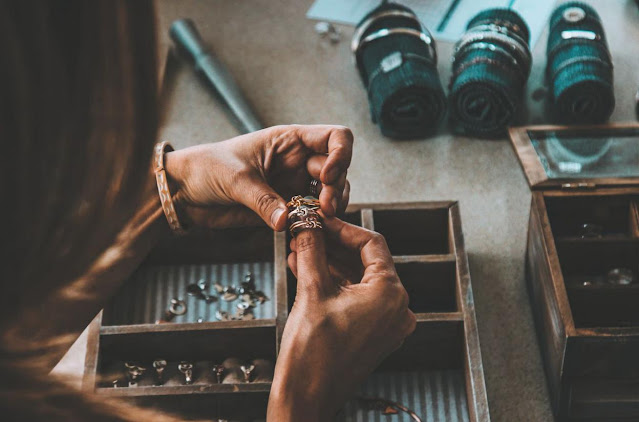Gold vermeil vs. Gold plated vs. Gold filled vs. Sterling silver
What exactly is vermeil jewellery? And how is it different from gold-plated jewellery? And where does silver sterling fit in with all this?
All are valid questions - the world of gold and vermeil jewellery might be hard to get your head around. If you’re shopping for gold jewellery, there’s no need to feel intimidated by the high price tag of this precious metal. Instead of buying pure gold - you can shop for any of the following variations. But before you do, let’s make sure you know the differences between the different types of gold.
What exactly is vermeil jewellery and how it is different?
If you’ve got your heart set on a gold vermeil necklace, but not sure exactly what vermeil is - your answer is right here.
Gold vermeil jewellery

Gold vermeil jewellery is a high-quality form of gold plating that uses sterling silver as the base. In order to achieve the vermeil status, the purity of the gold coating should be at least 10 karats. Although, typically it is between 14-22 carats. The higher the karat, the more expensive the piece. Jewel Tree London carries a line of vermeil jewellery that is plated with 18-carat gold. This is a perfect choice for those with skin sensitivities or allergies.
Gold-plated jewellery

A strong base metal (often steel or brass) is dipped into a mixture of electroplating solution and a lump of solid gold. When an electric current is applied, a thin layer of gold is deposited on the metal. Since the plating is rather thin in comparison to gold vermeil jewellery, the colour of the gold is more likely to fade after repeated use.
Gold-filled jewellery (rolled gold)
Contrary to the name, such pieces are not actually filled with gold. A solid layer of gold is mechanically bonded to a high-quality base metal such as jeweller’s brass or sterling silver. This results in a thick coat of gold: the gold content is typically 5% of the total weight of the piece. Usually made up of at least 14-carat gold, gold-filled jewellery is durable and with the correct care, it should last as long as solid 14-carat gold equivalents.
Sterling silver jewellery
Sterling silver is the exception to this list. It is produced using a blend of pure silver with another metal, often copper. Once alloyed, the silver becomes strong and robust. The standard is at least 92.5% silver. This explains why you often see the .925 stamp see on sterling silver jewellery pieces.
What about pure gold?

The purity of gold is measured by how much pure gold is used in the production of a piece. A measure of 1 carat is where there is 1 part of pure gold and 23 parts of metal alloy - or 4% gold. So 24-carat equates to 100% pure gold. By comparison, 14-carat is 58% and 18-carat is 75% gold.
Now you know the difference between the alternatives to pure gold, you can shop with confidence. Find out what’s new at Jewel Tree London- the ethical jewellery boutique.




Gold vermeil is similar to gold-plated jewelry but the difference is that the layer of gold is thicker and the metal underneath is sterling silver. ... Gold-filled jewelry, contrary to the name, is not actually filled with gold. Rather, a thick layer of gold is bonded to another metal, such as brass or copper.
ReplyDelete